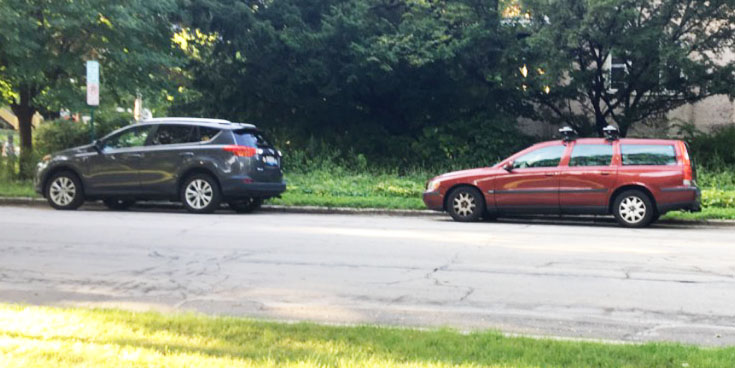Welcome to Parking Hell
Driving to school on the first day is never an especially enjoyable ride, but starting this school year there is another obstacle in the way of students who commute. Since the conclusion of last year, Fenwick drivers have lost the ability to park in the lot on the corner of Madison and Oak Park, and now, at the opening of the new school year, most are struggling to find open spots on the streets of Oak Park.
This parking pandemic started with the announcement last spring that Fenwick will no longer be renting the Madison lot. The Village of Oak Park plans to repurpose the land as the site of a commercial building. Construction has not yet begun on this new project.
The sudden loss of the Madison lot has dramatically decreased the number of spots available to the student body. Steps have been taken to combat this loss. Over the summer, the two apartment buildings adjacent to Fenwick were torn down, and the area was converted into a parking lot, that is planned to be the site of a new parking garage.
The lot on Madison held approximately 125 spots, and the student body is feeling the impact of their loss. Although the lot on the corner of Madison and East has been allotted to students to counter that loss, hang tags for this student lot cost 1000 dollars, and only 30 of those tags were sold this year.
All told, there was a net loss of approximately 95 parking spots, and though the administration has tried to counter that fact by selling 50 less regular hang tags, the number of student drivers has remained the same while the number of place for them to park has decreased. Even students who were not able to purchase hang tags because of the reduced number of tags available still have to drive to school; they are simple forced to pay for meter parking or park farther away.
Now that only 30 students have the ability to park in an established parking lot, the remaining students have to rely exclusively on street parking during school hours. This substitution has caused varying degrees of anxiety among student drivers, since many of the more inexperienced drivers find the prospect of parallel parking daunting.
Roughly one third of the driving population by the end of the school year consists of sophomores who have just recently begun to drive. Even among the upperclassmen, there are many who have never had to parallel park before, and there are some that have never before parked on the streets for school.
This increase in inexperienced drivers parking on the streets has led to an increase in the amount of space left between cars. There have been many reports of cars parked multiple feet away from each other. Cars parked in this way take up valuable space and exacerbate the sharp decrease in the availability of parking spots.
Due to the scarcity of parking space, some students have resorted to parking in places where they should not be. Cars with the Fenwick sticker can be increasingly seen parked illegally or in teacher lots. The number of parking tickets among students has increased significantly in the past weeks, and if a car manages to escape the wrath of relentless Oak Park patrols, there are still severe consequences more parking violations from the school itself.
The administration has also changed its policy on parking violations. The handbook now reads, “failure to report a vehicle or to observe these rules may result in one or more of the following: Student will receive 5 detentions and 5 demerits (first offense).” The consequences increase with the number of offenses, and a student may even have their hang tag revoked without any refund.
The effects of this situation go beyond the increased number of parking tickets. students have been forced to either arrive earlier to find a closer spot or to accept a lengthy walk to the building.
This early arrival time creates a vicious cycle in which students wake up earlier than they already must in order to find a spot, which forces other students to wake up even earlier. For already sleep deprived students, this cycle has been harmful.
The only alternative to waking up earlier is, for most, accepting the risk of tardiness. Students who choose to wake up relatively late risk having to park especially far away and arrive late for their first period class.
Student drivers have been struggling with this new arrangement, along with their many other responsibilities, but they are also ingenious and resourceful. They have adapted surprisingly well to these new changes, and parking hell may pass without too much damage in time.









